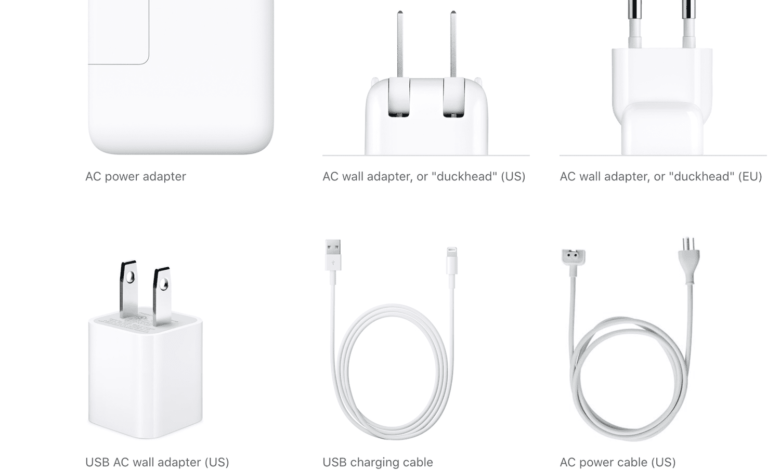The Ultimate Guide to Charging Blocks: Powering Up Your Devices Safely and Efficiently

In today’s fast-paced digital age, where our lives are intertwined with various electronic devices, ensuring they remain powered up is essential. This is where charging blocks come into play. These seemingly simple gadgets hold the power to keep our smartphones, tablets, laptops, and other gadgets juiced up and ready for action. But choosing the right charging block isn’t just about plugging in and waiting for the battery icon to fill up—it’s about understanding the technology behind it, ensuring compatibility, and prioritizing safety. In this comprehensive guide, we delve deep into the world of charging blocks, equipping you with the knowledge needed to make informed decisions and get the most out of your devices.
Understanding Charging Blocks
Charging blocks, also known as wall chargers, power bricks, or simply chargers, are devices designed to convert electrical power from an outlet into a format suitable for charging electronic devices. They typically feature one or more output ports where you can connect your device’s charging cable. These ports may support various charging standards such as USB-A, USB-C, or proprietary fast-charging technologies like Qualcomm Quick Charge or Apple’s Power Delivery.
When it comes to types of charging blocks, there’s a wide range to choose from. Traditional wall chargers with fixed prongs are the most common, offering a simple and reliable way to charge your devices at home or in the office. Power bricks, on the other hand, often feature foldable prongs or detachable cables, making them more portable and travel-friendly. Portable chargers, also known as power banks, are battery-powered devices that can charge your devices on the go, making them indispensable for travelers or anyone who needs to stay connected while away from an outlet. And then there are wireless chargers, which eliminate the need for cables altogether by using electromagnetic induction to transfer power to compatible devices.
How Charging Blocks Work
At their core, charging blocks work by converting alternating current (AC) from the electrical outlet into direct current (DC) that your device’s battery can use. This process involves several steps, including rectification to convert AC to DC, voltage regulation to maintain a stable output voltage, and current regulation to control the flow of electricity to the connected device. Additionally, modern charging blocks often incorporate safety features such as overcurrent protection, overvoltage protection, and short-circuit protection to safeguard both the charger and the connected device from damage.
One of the key factors to consider when using a charging block is compatibility. Not all charging blocks are created equal, and using the wrong one could potentially damage your device or result in slower charging speeds. It’s essential to match the power output and charging standards supported by the charging block with the requirements of your device. For example, some devices may support fast charging technologies like Qualcomm Quick Charge or USB Power Delivery, which require a compatible charging block to take advantage of their full charging speed. Additionally, using a charging block with insufficient power output may result in slower charging or even prevent your device from charging altogether.
Choosing the Right Charging Block
With so many options available on the market, choosing the right charging block can seem like a daunting task. However, by considering a few key factors, you can narrow down your options and find the perfect charger for your needs. The first step is to assess your power requirements. Different devices have different power needs, so it’s essential to choose a charging block that can deliver enough power to charge your device quickly and efficiently. For example, smartphones typically require less power to charge than tablets or laptops, so a lower wattage charger may be sufficient for phones but may not provide enough power for larger devices.
Safety is another crucial consideration when choosing a charging block. Cheap or counterfeit chargers may lack essential safety features, putting your device at risk of damage or even causing a fire. Look for chargers that have been certified by reputable organizations like Underwriters Laboratories (UL) or the Consumer Electronics Safety Association (CESA) to ensure they meet rigorous safety standards. Additionally, consider the build quality and materials used in the charger’s construction. A well-built charger with sturdy construction is less likely to fail or cause issues than a flimsy, poorly made one.
Common Features and Specifications
When shopping for a charging block, you’ll encounter a variety of specifications and features that can influence your decision. Understanding these features can help you choose the right charger for your needs and ensure optimal performance. One of the most important specifications to consider is the power output of the charger, measured in watts (W). Higher wattage chargers can deliver more power to your devices, allowing them to charge faster. However, it’s essential to match the charger’s power output to your device’s requirements, as using a charger with too high a wattage can potentially damage your device.
The number of ports on the charger is another crucial consideration. Single-port chargers are compact and lightweight, making them ideal for travel or use in tight spaces. However, if you have multiple devices that need charging simultaneously, a multi-port charger may be more convenient. These chargers feature two or more ports, allowing you to charge multiple devices at once without needing multiple chargers or outlets. Some multi-port chargers even feature intelligent charging technology that can detect and deliver the optimal amount of power to each connected device, ensuring fast and efficient charging for all your gadgets.
Compactness and portability are also important factors to consider, especially if you’ll be traveling frequently or using the charger on the go. Look for chargers with foldable prongs or detachable cables that can help reduce bulk and make them easier to pack and carry. Additionally, consider the weight and size of the charger, especially if you’ll be carrying it in a bag or backpack. Lightweight, compact chargers are more comfortable to transport and won’t weigh you down when you’re on the move.
Maximizing Charging Efficiency
Once you’ve chosen the right charging block for your needs, there are several steps you can take to maximize charging efficiency and ensure your devices stay powered up when you need them most. Proper placement of the charging block is essential, especially if it generates heat during use. Placing the charger on a flat, stable surface with plenty of ventilation can help dissipate heat and prevent overheating, which can damage both the charger and the connected device. Avoid covering the charger or placing it in enclosed spaces where heat can build up, such as under blankets or inside a bag.
The quality of the charging cable you use can also impact charging efficiency. Cheap or low-quality cables may not be able to handle the full power output of the charger, resulting in slower charging speeds or even damage to the cable or connected device. Look for high-quality cables made from durable materials like nylon or braided fabric, which are less likely to break or fray over time. Additionally, choose cables that are the appropriate length for your needs. Shorter cables are ideal for use with portable chargers or in tight spaces, while longer cables offer more flexibility and convenience.
Regular maintenance of your charging block can also help ensure optimal performance and extend its lifespan. Keep the charger clean and free of dust and debris, especially around the ports and prongs where dirt can accumulate. If the charger becomes dirty, gently clean it with a soft, dry cloth to remove any buildup. Avoid using harsh chemicals or abrasive materials, as these can damage the charger’s finish or cause scratches. Inspect the charger regularly for signs of damage or wear, such as frayed cables or cracked casing, and replace any damaged components immediately




